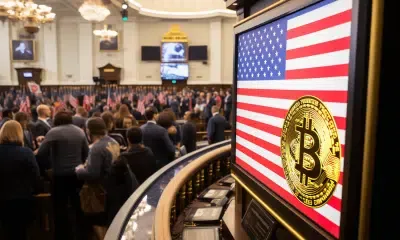
Solana’s Big Splash: March 2020 Kickoff Sets a New Pace for Blockchains
When did Solana launch, and what did its early days look like? On March 16, 2020, Solana flipped the switch on its Mainnet Beta. The high-speed network was up, running, though still in a test phase. That same day, around 14:29:00 UTC according to some, its first block was mined – Solana was truly born, ready to shake up what people thought blockchain could do.
That “beta” label wasn’t just for show; it’s a familiar sight in tech and crypto. It meant Solana could handle transactions and smart contracts, but the team was still tinkering under the hood. This early period was all about pushing the network to its limits in the wild, learning from users, and constantly tweaking things. Everyone knew there might be bumps, and sure enough, Solana hit some slowdowns and even went down a few times. Rough, yes, but these were lessons learned the hard way, pushing the team to make it better and more stable.
The beta tag also kept expectations in check – not everything was polished or even switched on, like staking rewards, which had to wait until they sorted out how new tokens would be released. Anatoly Yakovenko, one of Solana’s main minds, put it best: getting out of beta is something you “earn, not declare,” showing they were in it for the long haul to build something solid.
The Minds Behind Solana
So, who cooked up Solana and its core tech? A group of engineers, a good number of whom knew each other from Qualcomm.
- Anatoly Yakovenko: He’s the main idea guy. Back in late 2017, he wrote the whitepaper that first talked about Proof of History (PoH). His skills with complex systems and making data smaller, sharpened at Qualcomm and Dropbox, were key.
- Raj Gokal: He teamed up with Yakovenko in 2018 to start Solana Labs. Gokal came from General Catalyst and the health tech world, taking charge of getting things done.
- Greg Fitzgerald: Another ex-Qualcommer, Fitzgerald became Solana’s CTO. He was vital in shaping Solana’s design and hammered out the first PoH prototype with Yakovenko.
- Stephen Akridge: Also from Qualcomm, Akridge had a big idea: let GPUs handle signature checks. This really sped up how fast transactions could be processed.
- Eric Williams: He’s on the list as a Solana Labs co-founder and had worked with Gokal before.
Solana Labs, the company, got its start in 2018. They first called it Loom but changed it so people wouldn’t mix it up with another project. After a lot of hard work coding and raising money, they launched the mainnet. Then, in April 2020, the Solana Foundation popped up – a non-profit set up to help the ecosystem grow and keep things decentralized. The Foundation now holds the rights to the Solana protocol’s IP.
What Made Solana Different: The Eight Big Ideas at Kickoff
When Solana arrived, it made some big promises about tech, all built on eight key ideas cooked up to make it super fast and able to handle tons of users:
- Proof of History (PoH): Think of this not as how everyone agrees, but as a super-accurate timestamp for transactions. It creates a trustworthy record of when things happened, so ordering them is quick.
- Tower BFT: This is Solana’s way of getting everyone to agree (its consensus). It’s a version of Practical Byzantine Fault Tolerance specifically tweaked to work with PoH.
- Turbine: To spread data blocks around quickly, Turbine chops them into smaller bits. This helps them reach many computers on the network faster.
- Gulf Stream: This system gets transactions to the people who approve them (validators) before the current block is even finished. No more waiting around in a transaction queue (mempool).
- Sealevel: Imagine multiple smart contracts running at the same time without tripping over each other. That’s Sealevel, allowing for parallel processing.
- Pipelining: Like an assembly line for transactions. Different parts of checking a transaction happen at the same time on different bits of hardware.
- Cloudbreak: This is a specially designed database for account information that can grow sideways and handle lots of people reading and writing to it simultaneously.
- Archivers: These are computers on the network whose job is to store the blockchain’s history, making sure old data isn’t lost.
Sure, some of these ideas had roots in existing computer science, but Solana mixed and matched them in a fresh way, specifically for blockchain. The big hope was to crack the old “blockchain trilemma” (that tricky balance of speed, security, and decentralization).
Tackling the Big Scalability Problem
From the get-go, Solana set its sights on fixing some major headaches that other blockchains were giving people, like:
- Slow speeds and long waits: Bitcoin and Ethereum could only handle about 7-15 transactions a second, and you had to wait ages for them to go through. Solana wanted to be as fast as the internet.
- Clunky agreement and timing: Getting scattered computers to agree on the time of events was a known slowdown. PoH was Solana’s answer to that.
- Crazy high fees: Using networks like Ethereum was getting super expensive with “gas” fees, making lots of cool apps too pricey to run. Solana said it would offer much cheaper transactions.
Getting to Launch Day: Money and Practice Runs
It took a few years of hard work to get Solana’s Mainnet Beta off the ground in March 2020. Here’s a quick look back:
- 2017: Yakovenko put out his PoH whitepaper.
- 2018: Yakovenko and Fitzgerald got the first PoH testnet up and running. Solana Labs (which was called Loom back then) started up and began looking for cash, pulling in $3.17 million from early backers. Another $12.63 million came in from a “Founding Sale.”
- 2019: Lots of coding. In July, they announced a $20 million Series A funding round, led by Multicoin Capital (this included some earlier private money). They also ran testnets like “Tour de SOL” (kicked off in Q3) to see how the network held up under pressure.
- Early 2020: “Tour de SOL” officially started its first part in February. Then in March, they sold tokens to the public on CoinList, bringing in another $1.76 million.
Launching in a Wild Market & Facing Early Hurdles
When Solana showed up in March 2020, the crypto world was pretty shaky, partly because of the COVID-19 pandemic hitting globally. Ethereum was the king of smart contracts, no doubt, but everyone knew it was creaking under the strain of its own popularity. The timing seemed perfect for something new and speedy.
But it wasn’t all smooth sailing for Solana at first. That “beta” sticker stayed on for a long time, making some people raise an eyebrow. Worse, the network conked out a few times, big time, and had some wobbly moments. Often, this was put down to bots swarming it during hot NFT drops or new, tricky bugs popping up in its very complicated setup.
Naturally, folks started wondering if it was dependable and if they’d sacrificed too much stability for speed. People also worried it wasn’t as decentralized as it could be, given the hefty computers needed to run a validator and how the first tokens were handed out. Plus, a mix-up with the numbers on how many tokens were actually out there caused a bit of a trust issue early on.
The SOL Token and What They Hoped to Build
Solana started with 500 million SOL tokens ready to go. These got spread around through private sales and that public auction, with big chunks set aside for the community (looked after by the Solana Foundation), the team itself, and those who backed it early. Right from the start, SOL tokens were meant to be used for paying transaction fees, staking to help keep the network secure, and voting on how things should be run.
The big dream they talked about was a blockchain that could handle massive numbers of users, run incredibly fast, keep costs down, and really open the door for everyday apps (dApps) and make finance more accessible to everyone. The Solana Foundation was set up to push this dream forward, always aiming for more decentralization and making sure anyone could get involved.
Even though everyone started calling Solana an “Ethereum killer,” its creators often said they weren’t trying to destroy Ethereum, but rather to work alongside it and figure out how to solve the basic problems of making blockchains scale. They’ve kept their eyes on making sure everyone on the network is on the same page (global state synchronization) and seeing just how far they can stretch what a decentralized network can do. You can see this in new projects like the Firedancer client, which is all about making Solana even faster and giving people more software choices to run it.
Solana’s arrival in March 2020 definitely made waves. It’s been a bumpy ride with plenty of changes along the way, but the clever ideas at its heart and its non-stop push for speed have really shaken up the world of foundational blockchains (Layer 1s) and keep pushing it forward today.




